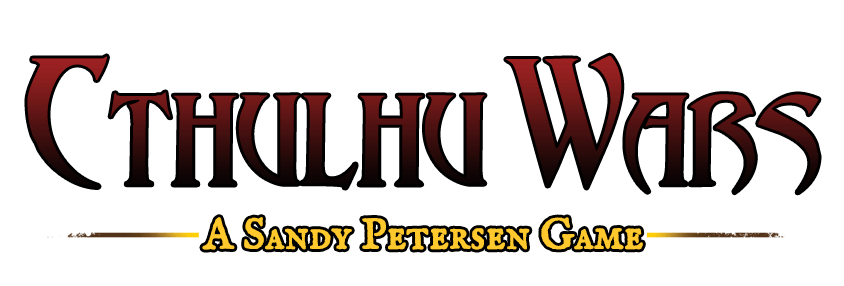In 2015 Petersen Games published the game Cthulhu Wars, which included 72 plastic figures, all in 28mm scale. Since then we have produced dozens of expansions and supplements, almost all of which feature additional plastic figures in that scale.
Eventually, we realized that we accumulated the most complete range of Lovecraft’s Cthulhu Mythos figures ever made, ranging from obscure entities such as Eihort and Ghatanothoa to better-known creatures such as Shoggoths and the King in Yellow. Many, if not most, of these figures have never been seen before as figurines.
In league with Chaosium, Petersen Games is now releasing these figures in blister packs as an official Call of Cthulhu figure line. Now, roleplayers of all types can acquire these figures separately. Or really, anyone who has need of some fungous horror in their games.
Creating Lovecraft’s Universe
I am of course an obsessed fan of Lovecraft’s work, and so even small details of the figures were scrutinized to ensure their successful creation. For example, look at this starspawn figure: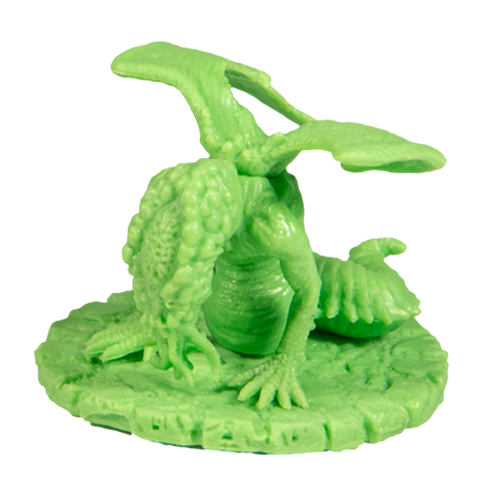
You can see that the creature tails off into a rather grub-like stump, and that its brain-case is open, as though its head is not yet complete. The idea here is not that this is a “small Cthulhu”, but that this is a larval Cthulhu, which will someday perhaps grow up into a Cthulhu – a terrifying thought.
In another example, these Undead are not zombies, but are covered in mummy-like wrappings.
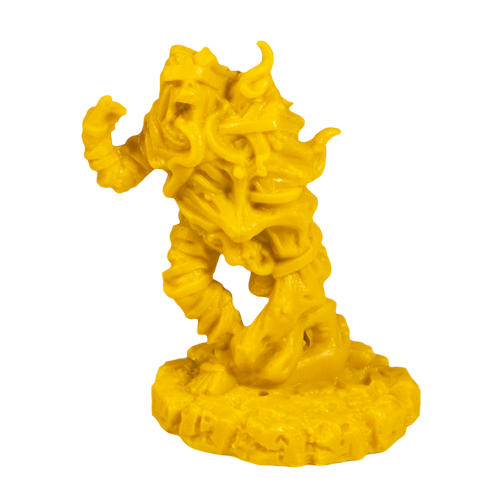
These wrappings not only give the undead a more ancient, occult feel, but also echo the tattered ribbons that cloak the King in Yellow figure, a possible origin for these undead horrors.
In yet another case that of the Deep Ones, I took care to have these creatures be portrayed as quadrupeds. Lovecraft specifically states in his texts that the Deep Ones are largely quadrupedal, yet they are almost never portrayed in this way. I wanted to be the first.
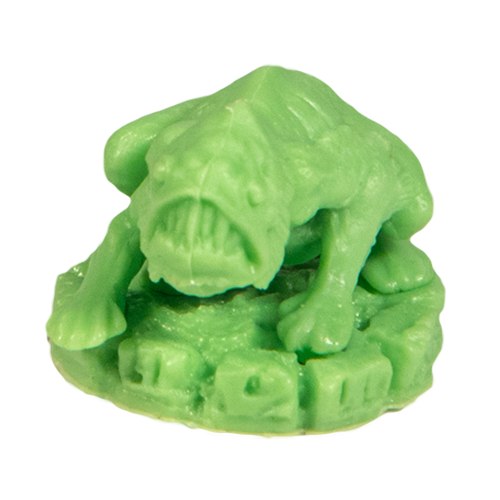
Some creatures from the Lovecraft universe are notoriously difficult to portray. One example is Ramsey Campbell’s Daoloth entity, which is described as a mass of rods and spheres, yet with an impression of peeping eyes between the elements.
We created Daoloth as a twisted mass of rods, but when viewed from one specific direction, it can be perceived as an eye.
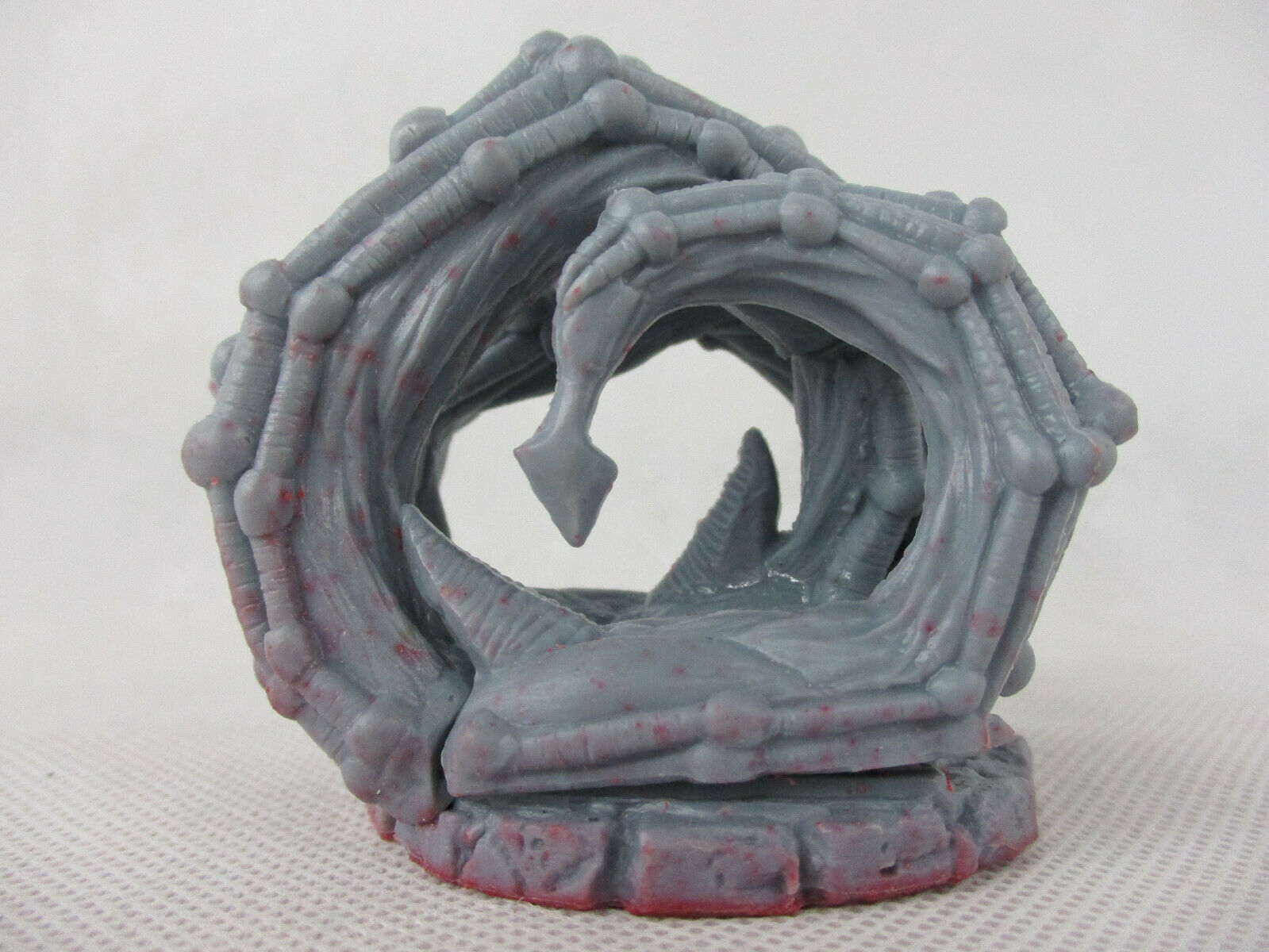
Lately we have started to also produce figures of the Elder Gods – a pantheon apparently at least in part opposed to the Great Old Ones. Our first was Nodens, who is an ancient Celtic God also known as Nuada. Lovecraft describes him as riding in a seashell, but I didn’t want this being to just look like some beardo in a chariot.
So, drawing up on his description as an “Elder God,” he is mummified and sere, hooded, and creepy, but without tentacles, which are the hallmark of the Great Old Ones, his rivals. Instead of a normal seashell, he is emerging from a gigantic extinct ammonite.
Because Nodens in Celtic myth is described as having an artificial silver hand, I gave Nodens a technological weapon as one of his hands, perhaps some kind of energy weapon or sensor. This also helps differentiate it from the Great Old Ones, which are wholly biological. I intend to continue this art style for future Elder Gods.
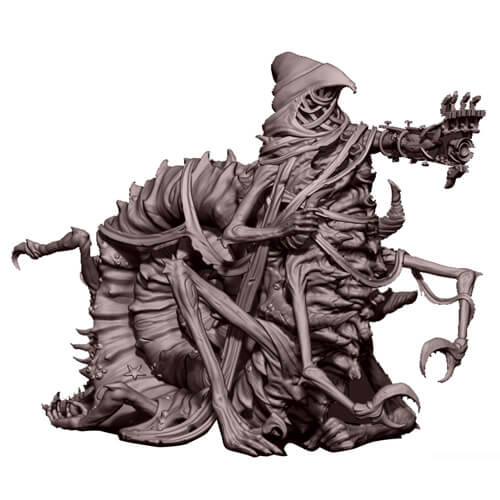
But, of course no one has to know the backstory of a particular figure to find it useful in a tabletop game, or to enjoy painting it.
About Sandy Petersen
Sandy got his start in the game industry at Chaosium in 1980, working on tabletop roleplaying games. His best-known work from that time is the cult game Call of Cthulhu, which has been translated into many languages and is still played worldwide.
He also worked on many other published projects, such as Runequest, Stormbringer, Elfquest and even the Ghostbusters RPG, and was instrumental in the creation of dozens of scenario packs and expansions. He also acted as developer on the original Arkham Horror board game.
In 2013 he founded Petersen Games which has released a series of highly successful boardgame projects, including The Gods War, Evil High Priest, and the much-admired Cthulhu Wars. His games have sold tens of millions of copies worldwide, and he has received dozens of awards from the game industry.

